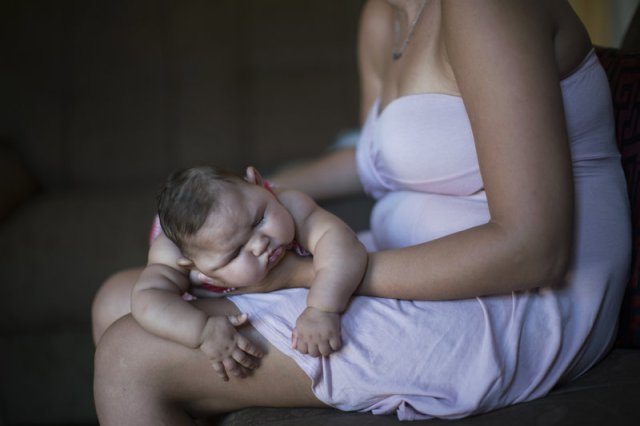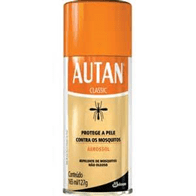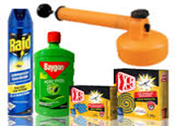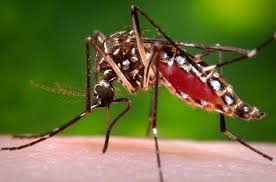Updated Feb. 15, 2017
Chikungunya & Dengue infections … and now Zika infections … represent some of the world’s greatest health threats, increasing 30-fold in the last 50 years, expanding to new countries ~ annually threatening at least 2.5 billion people around the globe.
Got Zika?
Think you might have Zika…?
This is very important, because Zika, Dengue & Chikungunya virus infections share most of the same symptoms.**
Consider how Zika persists & is transmitted by bodily fluids – as long as 80 days.
The New England Journal of Medicine reports that some patients showed Zika virus in serum (blood) as long as 54 days … while some patients had no ZIKA virus in blood samples after 14 days.
Other patients showed Zika in urine for up to 39 days, while others had no Zika in urine after just 8 days
Semen results were most troubling, showing some patients had Zika Virus present up to 80 days after infections … while the fastest Zika virus clearance was in … ~ 34 days ~
http://www.nejm.org/doi/full/10.1056/NEJMoa1613108?query=featured_home&
~ ~ ~ ~ ~ ~ ~ ~ ~ ~ ~ ~ ~ ~ ~ ~
(cont. with the main article)
Reasons for Concern:
Dengue infections have been constantly circulating in Yucatan since the 1980’s. Next: Chikungunya virus infections popped up in large numbers in the summer & fall of 2015. Even more recently: It now is fairly clear to some Yucatecan physicians that we also have had low levels of Zika virus circulating in Yucatan since last September.
(For details see Zika: A New Mosquito Borne Virus Arrives in Yucatan)
* * * * *
Additional Reasons for Concern?
In addition to Dengue’s well know health consequences, Zika virus infections in pregnant moms appears to cause unusually high numbers of distinctive microcephaly (tiny heads) for new-born babies who were infected in utero. 
Chikungunya presents difficult health challenges in the forms of spiking bi-modal (or multi-modal) fevers, horrible joint pain, and joint pain and fatigue that lingers for months for some CHIKV patients.
In addition to those problems: Yucatan health officials have just announced 197 cases of fatal liver cirrhosis in Merida for 2015 ~ spiked up over 3X higher ~ vs just 56 cases in 2014.
Health officials understand that this big 250% increase in fatal liver cirrhosis cases is due to people with Chikungunya + liver damage who continue to drink alcohol.
Chikungunya infections temporarily damage the liver, raising liver enzymes (enzimas hepaticas) by 3X due to liver inflammation. Drinking alcohol while having an inflamed liver can cause SERIOUS permanent-damage to the liver.
All lab tests (NS1, PRNT, & IgM ELISA) that are done AFTER the patient is over with their fever, simply do not reliably distinguish between the different flaviviruses, because Dengue, Chikungunya, St. Louis Encephalitis, and Zika antibodies all have too much cross-reactivity with the test reagents.
Details on Dengue, Zika & Chikuyngunya Viruses
Chikungunya (CHIKV) & Dengue (DENV) viruses are now permanently found across the Yucatan & Mexico, extending up into the USA. Both viruses are carried by the same mosquito: Aedes aegypti.
 Dengue , Zika and Chikungunya viral infections are transmitted only by infected Aedes aegypti mosquito bites. … Protecting ourselves from mosquito bites is paramount to our health.
Dengue , Zika and Chikungunya viral infections are transmitted only by infected Aedes aegypti mosquito bites. … Protecting ourselves from mosquito bites is paramount to our health.
Eliminating mosquito bites & breeding sites from our homes & communities are essential to stopping Dengue, Zika and Chikungunya infections & fevers.
Before diving into all the fun details:
We ask that everyone reading this article, pause and thank Dr. Maria Alba Loroño Pino and Dr. José Arturo Farfan Ale for their 30 years of fine service to Merida and Yucatan in their ongoing research & education efforts for both Dengue and Chikungunya viruses.
We also thank the WHO, the US NIH, and CDC for their publications used for background information presented below.
Note that all of the FINE plots, tables and diagram materials presented below are due to Dr. Loroño’s and Dr. Farfan’s fine on-going work – and DILIGENT searching … and summarizing … of the best Dengue & Chikungunya research from around the world.
~ Please do NOT copy or use the images or tables or diagrams etc without giving proper attribution to: * Dra. Maria Alba Loroño Pino and Dr. José Arturo Farfan Ale, UADY Centro de Investigaciónes Regionales * as all of the image, table, and diagram materials are copyright protected, not for general public use.
The text in the article is Yucalandia.com’s and is available for copying with proper attribution.
Key Characteristics of Dengue, Zika and Chikungunya Infections:
Zika Virus Infections:
Zika virus, like Dengue and Chikungunya viruses, is spread to people through Aedes aegypti mosquito bites. Zika virus disease (Zika) most common symptoms are fever, rash, joint pain, and red eyes – and possibly eye lesions. Symptoms are usually mild, lasting from several days to a week. Severe symptoms requiring hospitalization are uncommon.
Most Zika virus infected patients experience almost no symptoms or only very mild symptoms.
Still, it is very important to STOP ZIKA now … because it it related (’causes’) microcephaly (tiny heads) for Zika-infected babies in the womb ~ a lifelong affliction for these infants.
.

Chikungunya Fever (CHIKV)
Think: Spiking fever, biphasic fever*, joint / muscle / tendon pain, rash, pain in the hands & feet, plus … liver inflammation**, … and serious blood complications: Watch for low platelet count symptoms***. … Plus one more nasty effect: 5% to 50% of CHIKV patients suffer from severe joint pain for years.
Excessive bleeding can be a huge problem, especially if our platelet counts drop from the viral infections, so taking NSAIDs and blood thinners*-* is VERY RISKY if the person still has a fever:
NSAIDS: ~ Aspirin, ~ Ibuprofen, ~Advil, ~Aleve, ~ Diclofenaco, ~ Naproxen Sodium, and
Blood Thinners*-*: ~ Warfarin*-*, ~ Coumadin*-*, ~ Xarelto*-*… et al
Taking NSAIDs or Blood Thinners is HORRIBLY RISKY when you have the any of combination of fever + rash, joint pain, pain in the extremities, bone pain, pain behind the eyes (a Dengue symptom), bleeding … easy bruising, purpurea, bleeding from the gums, eyes, nose, black stools etc …
*-*Be sure to talk with your physician before stopping taking blood thinners, but note that continuing blood thinners may trigger fatal bleeding in both DENV & CHIKV infections, if your Blood Platelet Counts drop***.
~ When your CHIKV or DENV fever (elevated temperature) ends, (typically after 8 – 10 days of fever), the WHO says you can resume taking NSAIDs or blood thinners.
.
Other Chikungunya Health RISKS to Avoid:
Don’t Drink … if you have any Chikungunya symptoms (fever, rash, etc).
There were 197 cases of fatal liver cirrhosis in Merida 2015 ~ spiking up over 3X higher ~ versus just 56 cases in 2014.
Health officials understand that this big 250% increase in fatal liver cirrhosis cases is due to people with Chikungunya + liver damage … who continue to drink alcohol … during or after the fever.
Chikungunya infections damage the liver, raising liver enzymes (enzimas hepáticas) by 3X, due to liver inflammation. … Drinking alcohol while having an inflamed liver can cause SERIOUS permanent-damage to the liver.
Please, for your own protection: Don’t drink during … or after … having a Chikungunya infection …
No drinking for months … until your liver enzymes heal back to normal levels.
Note that the liver enzyme (enzimas hepáticas) test is easily done by most local clinical laboratories… Just walk-in, have them take a blood sample, and get your test results in a few days.
.
Chikungunya Fever Notes:
*Biphasic fevers last for several days, then the patient feels relief (no fever), and then the fever returns again for several days.
**Chikungunya often causes temporary liver inflammation and elevated liver enzymes & creatinine serum levels, so, if you suspect you have CHIKV symptoms, then NO Alcohol consumption for 6 months to a year, until your liver enzyme (enzimes hepaticas) levels return to normal. Note that consuming alcohol while having an inflamed liver can lead to near-permanent liver damage (cirrhosis) .
***Low Platelet Count Symptoms:
If you have a low platelet count, you may experience:
- bruising that is red, purple, or brown (purpura)
- a rash with small red or purple dots (petechiae)
- nosebleeds.
- bleeding gums.
- bleeding from wounds that lasts a prolonged period of time or doesn’t stop on its own.
- heavy menstrual bleeding.
.
~ There can also be unobserved bleeding into the Gastro-Intestinal (GI) tract that causes vomiting of coffee-grounds-like congealed blood … or defecating black stools. ~
.
If you have any of these symptoms, as a part of a suspected Dengue or Chikungunya virus infection, Get To a Hospital or Doctor’s office, ASAP for a potentially much-needed transfusion.
Continuing: A single CHIKV infection offers lifetime immunity … while Dengue (DENV) infections only give immunity to one (1) of the four possible DENV strains, offering protection against just that 1 strain for just a few months + Plus there are worse DENV symptoms with every subsequent re-infection (due to subneutralizing antibodies).
Here’s a little bit of how CHIKV infections work:

~ Caglioti C, et al, “Chikungunya Virus Infection: An Overview”, New. Microbiol. 2013: 36(3): 211-27 ~
How many readers noticed the curious unique step of how CHIKV moves out of our blood vessels into various target organs?
Specifically, CHIKV viral replication takes place in our fibroblasts, macrophages and endothelial cells. The infection causes a series of strong innate immunilogical responses, producing numerous pro-inflammatory mediator compounds.

Note that there are different CHIKV viral proteins that infect our monocytes and macrophages, which then migrate to our synovial (joint) tissues, liver, muscle and brain tissues … causing some patients to become chronically infected.
This is how CHIKV produce its unique months-to-years of chronic inflammation and swelling. …
Do some readers still think it’s OK to drink alcohol during or after a CHIKV infection?
Fortunately, CHIKV does not present high risks of death, when treated correctly: Fatality rates from India and Reunion Island patients have shown only 1 fatality for every 1,000 patients, with deaths mainly from neurological complications. Note that the CHIKV Asian-line version that hit Reunion Island had over 50% rates of patients with chronic joint pain, and some showing permanent brain damage.
.
Dengue Fever (DENV) Symptoms
“Spiking fever, searing muscle and joint pain, blood seeping through the skin, shock and possibly death—the severest form of dengue fever can inflict unspeakable misery. 1” … Though as many as 70% of DENV infected patients experience only mild symptoms.
Dengue also sometimes presents with distinctive pain behind the eyes
and sometimes low platelet counts: Possibly requiring a numero de plaquetas test, especially during Days 4-6 of fever. See list the low platelet count symptoms above***.
Dengue Virus infections come in several forms:
- Most people get mild infections with few symptoms and possibly a short duration low fever;
- Others get some combination of intense fever, pain behind the eyes, body rash, extreme pain in their bones and joints, and mild nose bleeds; (these two are called “Dengue Virus Infections” or “Dengue Fever”)
- A few (3% – 5%) get the potentially fatal symptoms of “Dengue Hemorrhagic Fever” (DHF) of Dengue Shock Syndrome (DSS), where DHF symptoms include s bleeding from the eyes, gums, nose, under the skin, or into the GI tract, vomiting, and black stools.
. . . Our local Dengue experts add the following warning signs that are fairly unique to Dengue infections:
- Pain behind the eyes (retro-orbital pain),
- Distinct pain in the bones and joints (hence Dengue’s other name: “Break-Bone Fever”), and/or
- Mild hemorrhagic manifestations like petechiae (small dots of bleeding under the skin) and mucosal membrane bleeding (e.g. nose and gums) may be seen.
CRITERIA FOR SEVERE DENGUE SYMPTOMS
Severe blood plasma leakage leading to:
• Shock (DSS)
• Fluid accumulation with respiratory distress
• Severe bleeding as evaluated by clinician
• Severe organ involvement
• Liver: AST or ALT =1000
• CNS: Impaired consciousness
• Heart and other organs
DENGUE FACTS:
- Infection by 1 of 4 Dengue (DENV1, DENV2, DENV3, & DENV4) strains gives protection against only that strain for 4 months. A single CHIKV infection however gives lifetime immunity.
- Infection by any the other three DENV strains are possible after having a DENV infection, and re-infection by the first strain is possible after 4 months. There is no such thing as “Dengue H” (even though some physicians mistakenly talk about “Dengue H”).
- All four Dengue Virus strains (DV-1, … , DV-4) plus CHIKV are circulating-in and endemic-to the Yucatan.
- Prior Dengue infections seems to almost universally interfere with your subsequent immune responses to new Dengue infections. Each new infection produces more and more severe symptoms, increasing the likelihood of the possibly fatal Dengue Hemorrhagic Fever (DHF) symptoms & Dengue Shock Syndrome (DSS).
- There can be a ~ 10 day up to 3 weeks ~ delay between the mosquito bite and onset of Dengue symptoms. … There are anecdotal reports of as little as 4 days between being bitten and the onset of symptoms. CHIKV symptoms typically appear between 4 – 12 days, but as few as 0 day delays have been reported for CHIKV.
- Duration: An average Dengue episode represented 14.8 lost days for ambulatory patients and 18.9 days for hospitalized patients.
======================================
Since this website (Yucalandia.com) is about surviving Yucatan, it’s important to polish our Spanish skills every now and then:
================
Unfortunately, there are no cures nor anti-viral treatments available for DENV nor CHIKV infections.
DENV & CHIKV patients can also get just 1, or 2, … 3, or 4 or more of the symptoms listed above. Oddly, not everyone gets a fever … some people experience just mild flu-like symptoms or almost no symptoms.
TESTING for CHIKV and/or DENV :
~ Source: PAHO and CDC
Sometimes pictures (here) are worth more than a thousand words…
Studying these plots, we can see that the DENV and CHIKV fevers start about 7 days after we are bitten by an infected Ae. aegypti mosquito.
Unfortunately, most lab tests … (“Serology” in the plot – for IgG and IgM antibodies – made by our immune systems) … don’t work until DAY 4 or 5 of the fever. There are a few sophisticated reference/research labs who do RT-PCR testing, but that is uncommon. Still, RT-PCR can find DENV and or CHIKV in the early days of the fever.
Note that many common lab Serology antibody tests do not accurately tell every patient when they have DENV or CHIKV infections, because the patient’s IgM serum levels (the antibodies our immune system creates first) for an active infection may be too low for the lab to detect. This means that many people who get tested for Dengue or Chikungunya are mistakenly told by their physician that “No, you don’t have Dengue.” – when you actually do have a Dengue infection, due to the less-than-perfect nature of hospital lab testing
=> Doctors simply have almost no (near-zero) training in laboratory testing, so they often are not aware of the high “False Negative” rates of the tests they order.
====================================
In addition to the common IgG and IgM serological tests, there are a variety of NS1 antigen test kits. These kits test for a core protein of the virus, which is initially also present only at low levels at first.
If your doctor chooses NS1 testing, there are some problems (anomalies) worth considering: Pretty much all the NS1 tests have extremely high False Positive rates ~ postinfection ~ … This means they incorrectly/falsely report ~ post infection – that Dengue virus is present in the patient, when there is no infection remaining.
Dengue virus infections are correctly detected by NS1 antigen tests from day 3 to days 8 … and then the NS1 test becomes NOTORIOUS for incorrectly falsely reporting ~ false positives ~ for typically 9 days after our first Dengue infection is OVER.
Again:
Many doctors and some laboratories do not seem to be familiar with the Dengue literature – as commonly cited by 100’s of papers. … like these on NS1 testing:
http://www.ncbi.nlm.nih.gov/pmc/articles/PMC3008478/
and
http://www.ncbi.nlm.nih.gov/pmc/articles/PMC153354/
For these combination of common False Negatives & False Positive test results: Know that a patient’s clinical symptoms are often more reliable indicators of CHIKV and DENV infections than the lab test results.

… Also know that high IgG levels of antibodies in our blood, show that the person had a PAST DENV or CHIKV infection (as shown in the CDC’s plot here).
Fortunately, the treatments of rest and hydration are the same for both Dengue and Chikungunya infections, so a misdiagnosis by a doctor does not change the treatment. So, If you have Dengue or Chikungunya symptoms… get plenty of rest and fluids, and watch for the *** Low Platelet Count symptoms listed above***
=========================
If you or a household member gets the common symptoms:
~ Spray the house – 3 times – carefully – to kill Dengue / Chikungunya carrying
Aedes aegypti mosquitoes (+ Aedes albopictus in USA, Q. Roo & Chiapas)
… to prevent freshly infecting more female Aedes aegypti mosquitoes – because if an uninfected female Aedes aegypti mosquito bites the febrile patient, that mosquito likely becomes a NEW fresh CHIKV or DENV carrier.
Killing infected and un-infected Aedes aegypti mosquitoes helps prevent infecting your family, household & neighbors.
Since there are no drugs to treat CHIKV or DENV infections:
~ Bed rest, hydration (min 8 glasses per day),
~ During the 6 – 10 days of having a fever: NO aspirin, NO Advil, NO Aleve, ~ Motrin, ~ diclofenaco, ~ naproxen sodium, ~ ibuprofen nor other NSAIDs. … IF YOU ARE TAKING BLOOD THINNERS like Warfarin, Coumadin, Xarelto: Contact your physician immediately to consider temporarily suspending their use.
… Why? Because they seriously affect our blood-clotting abilities, which can trigger fatal effects if the patient gets the low platelet count symptoms.
When your CHIKV or DENV fever (elevated temperatures) ends, after 8 – 10 days, WHO says you can resume our normal NSAIDs or blood thinners usage.
~ Final Note: Watch for low platelet count symptoms, esp. during Days 4 – 6 of fever, for both CHIKV & DENV. If low platelet symptoms are present (see list above***): Take the patient to a hospital for testing and possible transfusions.
==================================
HOUSEHOLD RISK FACTORS AROUND OUR HOMES THAT INCREASE MOSQUITO POPULATIONS … Plus ADVICE ON HOW TO PREVENT THEM
Modern tropical city life combines large human & mosquito populations with a plethora of cryptic breeding sites … aggravated by increasing resistance to publicly sprayed insecticides. This combination of problems make it very difficult to prevent or control dengue & chikungunya outbreaks using any single approach.
Reducing dengue risks in our modern homes requires a multi-pronged approach.
Mosquitoes living in our homes are well-shielded from public outdoor insecticide spraying programs, with 60% of Ae. aegypti household females found hiding in our bedrooms, even though Ae. aegypti is a daytime feeder. This proves that effective dengue control in cities requires ~ installing & maintaining good screens ~ to exclude mosquitoes, paired with on-going in-home mosquito control efforts, especially in our bedrooms. 
~ Aedes aegypti mosquitoes prefer to live and feed indoors in our homes, with up to 40 Ae. aegypti females per house, found in 38% of Yucatecan homes that have no window screens.
~ Aedes aegypti mosquitoes are most active in the morning, and they prefer to bite our lower extremities (exposed calves & feet), so we need to either stay in mosquito*free areas (well-screened) or cover our legs & feet, or spray those areas with a good insect repellent.
~ Spraying indoor spaces with insecticide 3 times can effectively reduce both Ae. aegypti populations and reduce dengue & chikungunya infections. When spraying, focus on stored cloths in the closet (as the mosquitoes love our lingering body odors on our clothing) – physically moving the clothes to get the spray into the hanging shirts, dresses, etc. Also focus on spraying under furniture, like under beds, desks, etc, as Ae. aegypti mosquitoes love to hide and rest down low. Some aedes mosquitoes also like to rest on the ceilings.
~ Electric plug-in insecticide emitters (placas) and mosquito repellent coils are also helpful in reducing mosquitoes in our homes.
Aedes Aegypti Facts
- The adult ae. mosquito lives roughly 1 month “in the wild”. Under lab conditions, they live up to 6 months.
- Once an ae. adult gets DENV or CHIKV virus, they transmit it for their lifetime: 10 days – 6 months.
- Mosquito traps (that emit CO2 from propane) or the UV light+fan ones work well at trapping just mosquitoes, but the ones that use a UV light attractant and electrical grids indiscriminately kill lots of many types of bugs. (reducing bat populations). Add “stink-bait” to make them effective.
Dengue and Chikungunya Transmission occurs as a chain of events. Break just one link of the chain and Dengue/Chikungunya transmission ends.
- Uninfected female ae. finds febrile Dengue/CHIKV infected Human.
- Female ae. bites the febrile Dengue/CHIKV infected Human.
- Female ae mosquito hides, rests, digests for 3-4 days.
- Dengue/Chikungunya virus moves from the mosquito’s mid-gut up into the ae. mosquito’s salivary glands.
- Female ae. mosquito lays eggs in water.
- The now Dengue/CHIKV-infected female ae. mosquito finds another human and bites human.
- Mosquito eggs hatch and develop into adults in 7 days at Yucatan temperatures.
- Newly hatched female mosquito has sex with male mosquitoes.
- Male mosquitoes feed on nectar and plants.
If you break or interrupt any single link in this chain of mosquito activity, (1-9), Dengue transmission stops, which makes mosquito control our best proven way to control the spread of Dengue virus.
Eliminating or treating mosquito breeding sites is highly effective and our best current solution:
- clean up rubbish piles & drain standing water,
- empty, wash, & refill pet water bowls at least every 4 days,
- drill holes in the bottoms of all outdoor flower pots,
- cover household drains tightly, or treat with ammonia to kill larvae,
- flush unused toilets weekly, or treat w/acid or ammonia, or seal them with plastic wrap, (acid/ammonia is OK to put in the ceramic toilet bowl, but they damage the plumbing parts in the toilet’s water tank)
- maintain sufficient free-Chlorine levels in swimming pools and fountains to kill mosquito larvae,
- dispose of old tires, buckets, & plastic items that retain even small amounts of rain water,
- drain unused swimming pools to total dryness, and consider using a larvacide like Copper Sulfate to treat any rain water that accumulates during the owner’s absence.
- treat fountains and pools with chlorine or copper,
or
• Use larvae eating fish like Gambusia, or Poecilia reticulata (Guppies) or Poecilia and velifera (Mollies). or
• Use Bt tablets (Bacillus thuringiensis).
Outdoor / Community Efforts
~ Cleaning up exterior mosquito breeding sites helps, but clean-ups alone are not enough. Today’s “throw-away” society creates too many cryptic breeding sites around our homes. It only takes a tablespoon of clean standing rainwater for a week for successful Ae. aegypti mosquito breeding. This means bits of plastic, polystyrene, ceramic pottery, tires and other trash hold water, creating: cryptic (hidden) breeding sites across our cities.
 While humans are Ae. aegypti favorite blood supplies, they will less-preferentially feed on monkeys, rodents and birds. These other species do not serve as Dengue-reservoir hosts (NOT DENV transmitters), unfortunately monkeys, rodents, small mammals & birds can be reservoir hosts for Chikunkungunya (CHIKV) .
While humans are Ae. aegypti favorite blood supplies, they will less-preferentially feed on monkeys, rodents and birds. These other species do not serve as Dengue-reservoir hosts (NOT DENV transmitters), unfortunately monkeys, rodents, small mammals & birds can be reservoir hosts for Chikunkungunya (CHIKV) .
Without a doubt, our past insect control measures alone have not been effective, especially in large urban environments due to all of our urban trash that holds the rain-water preferred by Aedes aegypti. This means our personal efforts are critical to eradicate adult mosquitoes & their breeding in our homes, our schools, in businesses and in our workplaces.
=========================
MORE RECENT UPDATES ON DENVAXIA by Sanofi and WHO 2015 Reports:
If you read the WHO reports and Sanofi’s most recent 2015 reports on the vaccine, readers may make a different choice, based on facts.
Consider that the “new” Dengvaxia vaccine only works on less than 40% of patients for protection against the nastiest strain of Dengue (DEN-2).**
Consider that you may likely need at least 4 shots a year, and possibly 8 shots a year to maintain an effective titer (sufficient blood levels) of Dengue antibodies (depending on patient’s age and immune system health).
**Consider that the vaccine is at best only effective about 70% of the time against just 3 of the 4 varieties of Dengue, (DEN1, DEN3, &DEN4) and it works relatively poorly against DEN2 ( < 40% effective).
DEN2 has been very common in recent past Yucatan Dengue infections.
==========================
That pretty much covers the things I remember off the top-of-my-head – but as always, we welcome comments and updates to keep the information offered here *fresh* and useful.
General References:
~ http://www.who.int/denguecontrol/en/
~ http://www.wpro.who.int/mvp/documents/handbook_for_clinical_management_of_dengue.pdf
~ http://www.who.int/tdr/publications/documents/dengue-diagnosis.pdf
~ 1. http://magazine.jhsph.edu/2010/spring/features/the_devils_disease_dengue_fever/page_1
===========================================
Use this material ONLY while giving proper attribution:
~ Please do NOT copy or use the images or tables or diagram materials without giving proper attribution to: * Dra. Maria Alba Loroño Pino and Dr. José Arturo Farfan Ale, UADY Centro de Investigaciónes Regionales * ~ as all of these materials are copyright protected, not for general public use.
The text in the article is Yucalandia.com’s and is available for copying with proper attribution to:
YucaLandia/Surviving Yucatan.
© Steven M. Fry
Read-on MacDuff . . .





